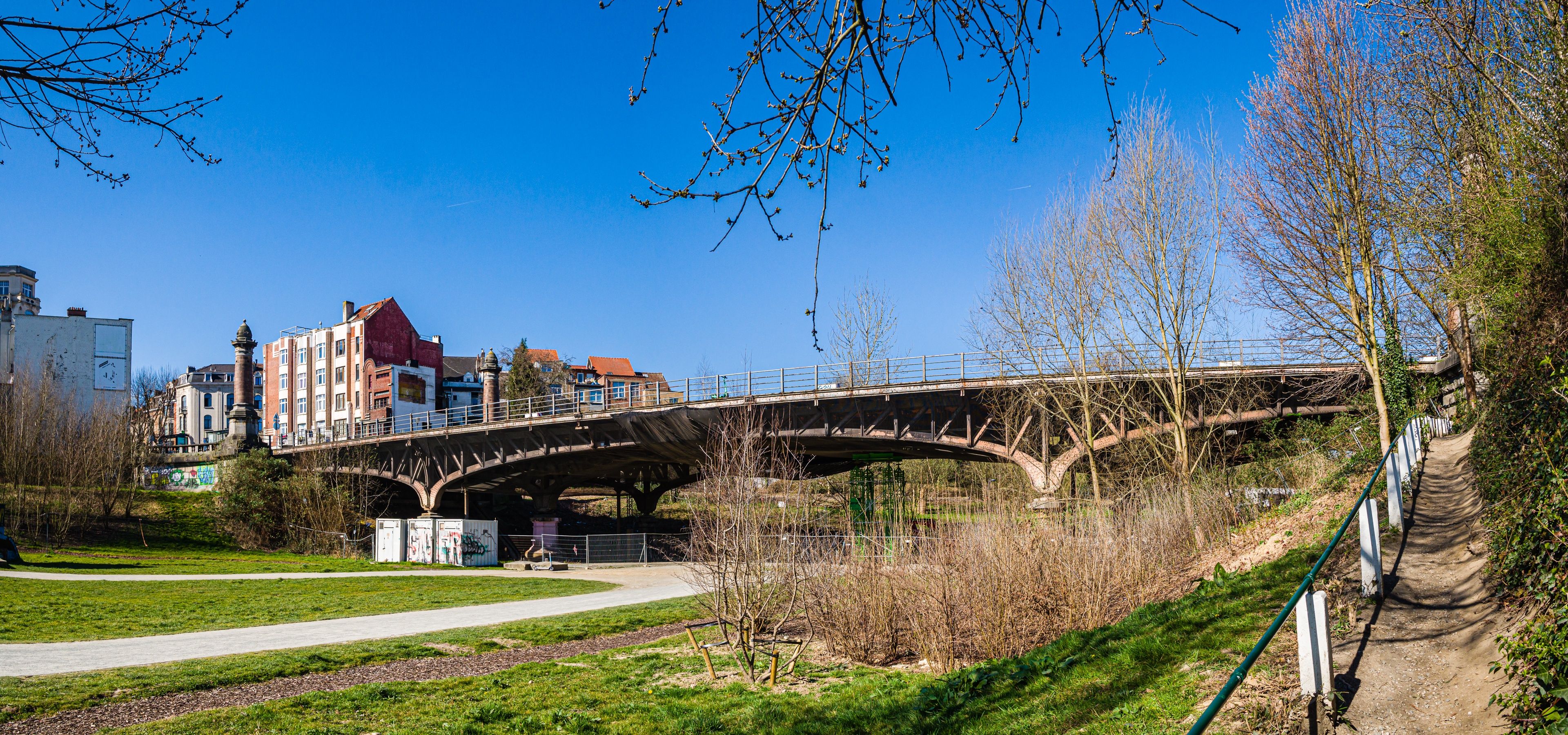New life for the Jubilee Bridge
Complete renovation of the protected railway bridge at the Tour & Taxis site and upgrades to improve safety and comfort of active modes of transport.
Pascal Smet, Brussels State Secretary for Urbanism and Heritage announced that the planning permit has been granted for the complete renovation of the Jubilee bridge, which overlooks the Tour & Taxis park, and for upgrades to make the bridge safer and more comfortable for active modes of transport. In July 2021, the Brussels Region and the Belgian national railway company SNCB had signed a cooperation agreement to jointly renovate this protected railway bridge, owned by SNCB. This bridge has great heritage value, but needs to be thoroughly renovated. The agreement involves shared financing between SNCB and urban.brussels. After the renovation by SNCB, the Brussels-Capital Region will permanently become the owner of the bridge and will manage and maintain it. Work is scheduled to start in the next few months, for a period of one and a half years.
“With the planning permit granted, an important first step has been taken to put an end to the precarious state of the Jubilee bridge. The goal? To restore this architectural and heritage gem to its former glory in the Brussels urban landscape. Thanks to a successful collaboration between the region and SNCB, this bridge can finally be thoroughly renovated. Safety and comfort of pedestrians and cyclists in the Maritime quarter will also improve. After its renovation, Pont du Jubilé will become a new symbol of the district and a new attraction of the Tour & Taxis site. From the bridge you will also be able to contemplate the Brussels panorama and the transformations along the canal,” explained Pascal Smet, Brussels State Secretary for Urbanism and Heritage.
Specifically, the bridge and its structure will be renovated with a view to contemporary uses and heritage conservation. Visually meaningful elements that have disappeared over the years will be integrated in a contemporary way.
The 80-metre-long main bridge deck will be replaced. To this end, all precast concrete components will be removed and replaced with a new structural bridge deck consisting of a metal plate.
As for mobility, each mode of transport (cars, pedestrians, cyclists) will have its own traffic flow and its own space to improve safety and comfort of all users. Two-way car traffic on the central section will be maintained. On both sides of the road, there will be a separated one-way cycle path with a width of 2.10 m. Pedestrians can use a wide wooden pavement.
As they are not original, the current railings will be removed along with the entire upper deck. The new models will be inspired by the characteristic elements of the original ones (height, structure, lattice structure, etc.) and will have guide columns and a handrail at the regulatory height in order to clear the view towards the park. The safety railing system will consist of a mesh reinforcement with stainless steel mesh. Taller guide columns (+/-2.5m), distributed identically to the main masts of before, will restore the space to its original fictitious boundaries and recall the original structure.
The historic luminaires contributed to the bridge’s monumentality and grandeur. Today they are gone, but the project plans to reintroduce them by reinterpreting the structures and globes in a contemporary way, while keeping in mind the geometries of the past. Their position and numbers will also be the same. Moreover, they will form the first part of the night lighting, which will be enhanced by lighting at the benches and railings to optimise visibility for all users.
The works, equally financed by urban.brussels and SNCB, is estimated to cost 8 million euros. The railway operator will assume the project management. After the renovation, the regional administration Brussels Mobility will take over the Jubilee bridge for a symbolic euro Theand will become the new owner and manager.
Historical context:
The Jubilee bridge, originally the “Monumental Bridge”, was built in 1904 by the Belgian national railway company at the time of the development of Boulevard du Jubilé and Boulevard Émile Bockstael, and bridged the railway from Thurn & Taxis. The government Brussels-Capital protected the bridge as a monument in 2007.
With an span of 80 m, the bridge rests on two abutments and on four octagonal pillars in blue stone. On either side are monumental columns in polished granite, with bases and tops in bluestone. They used to carry wrought-iron Art Nouveau lanterns. A metal railing currently replaces the former wrought-iron balustrade with Art Nouveau motifs.
The railway lines at the Thurn & Taxis site were removed in 2001 and the land under the bridge, sold in 2008, is now part of a park that stretches from Avenue du Port to Place Émile Bockstael.
Damiaan De Jonge
Marianne Hiernaux






